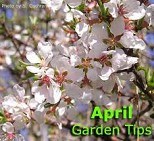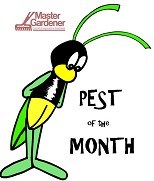Mile a Minute Vine, or Persicaria perfoliata, has been found in Livingston County, but the state Department of Environmental Conservation believes we can beat it.
It is highly invasive, and was identified here initially late in 2016, on Reservoir Road in Geneseo.
I was contacted by the Livingston County Planning Department recently, asking if I could write about this plant and project, I quickly agreed.
I am impressed by the extensive efforts that were organized last year to eliminate this invader, and I feel compelled to help out.
Staff visited the affected area five times last summer, inspecting 90 acres, then removing and destroying every vine found in four patches on a 10-acre plot. Two additional interns will be assigned to this area this year, to continue eradication and educate homeowners.
DEC feels we are in a good position to completely control this weed if we act now.
Our challenge is to be watching for more plants. Since seeds can germinate for up to six years, more plants will sprout. It is likely that some berries were eaten by birds in the past seasons, and might have been planted nearby.
Birds enjoy the shiny blue berries on this plant. Current thoughts are that they dropped the seeds – complete with fertilizer – on our local property.
The Mile a Minute vine can grow up to 6 inches per day. This means that if you leave your home for a week, your garden or driveway could be covered when you return. Yikes!
Gardeners and others who pay a lot of attention to the natural environment can be instrumental in controlling a new invasive plant.
The keys are recognition and removal. Both of these actions are not particularly difficult with this plant.
Mile a Minute vine is fairly easy to distinguish from other plants. It has very distinctive, broad triangle-shaped leaves, 1 to 3 inches wide. It also has saucer-shaped leaves called ocrea (collar) just below the berries.
The small berries are initially green, turning to an iridescent blue as they ripen. The stem has backwards curved prickles.
There are other weedy vines with triangle leaves, but only Mile a Minute vine has prickly stems and ocrea leaves.
Mile a Minute vine emerges in May, flowers open in June, then forms seeds. Seeds mature beginning in mid-July, so it is important to remove the plants before then.
Mile a Minute vine can grow in drier soil and some shade, but it prefers moist soil. Seeds will float, and can be carried by storm water to a new location.
The roots of this plant stay close to the surface, so it is fairly easy to pull out from moist soil. Heavy gloves are necessary due to the prickly stems.
More than 200 homeowners within a 1-mile radius of the identified plant location are receiving a postcard, with photos and additional information to help them identify this plant.
If you find this plant, report it to the Partnership for Regional Invasive Species Management, or PRISM.
Send a photo, via email if possible, to FL-PRISM@gmail.com. The plant location is needed including, if possible, GPS coordinates . At a minimum, call (315) 781-4385, and PRISM will assist you with the next step.
Julie Brocklehurst-Woods has been a Master Gardener Volunteer with Cornell Cooperative Extension of Livingston County since 2002. She enjoys helping all gardeners become successful gardeners, especially helping people identify tools and strategies to prioritize and simplify their gardening tasks. She will answer gardening questions by email: JulieBW48@gmail.com





